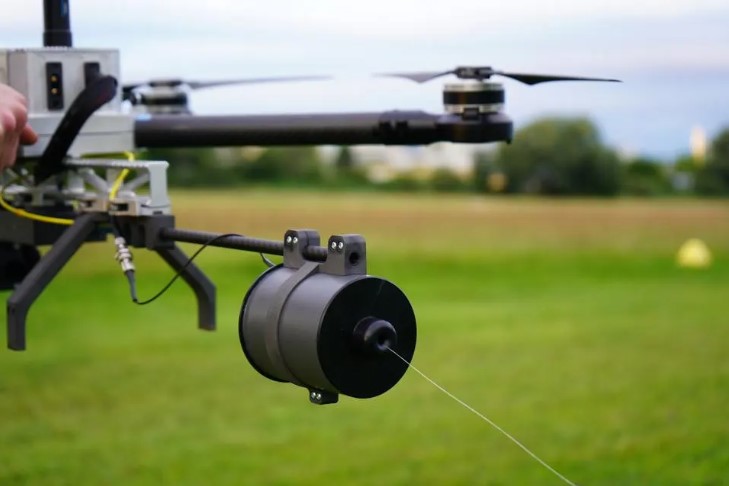Both Russian and Ukrainian militaries are urgently developing methods to detect and neutralize fiber-optic tethered drones that have proven immune to traditional jamming, Forbes defense correspondent Vikram Mittal reports.
Drones have become a defining feature of the Russia-Ukraine war, with both sides losing thousands monthly to jamming and shootdowns. But recently, both militaries have deployed "jam-proof" fiber-optic tethered drones that maintain control through physical cables instead of radio signals, creating an urgent need for new detection methods.
Ukrainian tech company Kara Dag is leading detection efforts with a combined acoustic-visual system, while Russia's Ministry of Radioelectronic Industry has called on its defense sector for similar solutions.
"Although fiber-optic controlled drones cannot be detected through their radio signature, there are other methods for detection," Mittal explains.
These counter-drone initiatives target a specific vulnerability: increased noise signature.
"Their propellers must generate more thrust to support the added payload of the cable spool," making them louder than conventional drones, notes Mittal.
The promising breakthrough in detection lies in the fiber-optic cable's properties.
"Although the cable is thin and difficult to see in the visible spectrum, it reflects light in the infrared range," Mittal reports.
New detection systems combine directional microphones with diffuse infrared lasers that sweep the sky while infrared cameras capture cable reflections. These systems represent the latest phase in what Mittal calls "the cat-and-mouse game of drone and counter-drone technology."
Read more:
- ISW: Russians make marginal advances near Toretsk, Kurakhove, deploy more fiber-optic drones
- Ukraine's Defense Ministry showcases fiber optic-controlled FPV drones
- Ukrainian ground drones get jamming-resistant fiber-optic control
- Drone wars: Ukrainian FPV destroys Russian fiber optic-controlled drone (video)





